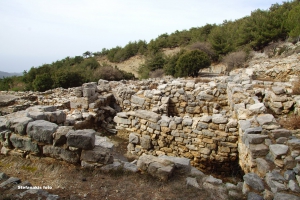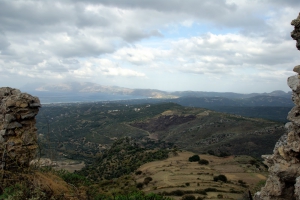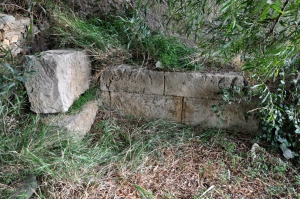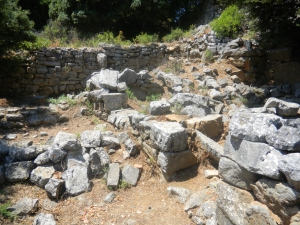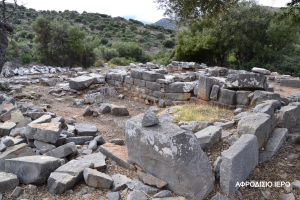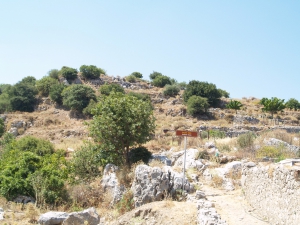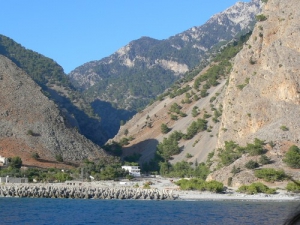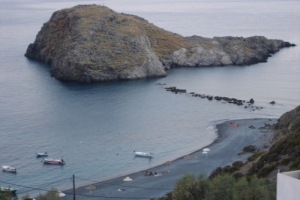The Peak Sanctuary that was dedicated to Hermes and Aphrodite is located at position Krya Vrissi, 5 km northeast of Kato Simi, and is the most important archaeological site in the province of Viannos.
The ports of Polirinia were Falassarna and Kissamos. It developed close trade relations with Sparta, Milos, Rhodes, Thiva, the coasts of Ionia and Egypt. Apart from trade, the town was apparently famous for livestock, as the name comes from the words “polla rinia” which means many lambs.
At the cape of Souda, above the shrine on the beach of Agia Pelagia we see some traces of the excavations carried out by Stylianos Alexiou. At this point he discovered the most important archaeological site of the wider area, the Prytaneum of the Hellenistic town of Apollonia (or maybe Panormos).
Ancient Dreros (or Driros) was built on the Mount Kadistos, next to the current church of St. Anthony, 2km northeast of Neapolis town. The town was inhabited by Eteocretans and Dorians (who arrived in Crete in 1100BC) and flourished in the Classical - Hellenistic Period.
The small ancient Sanctuary of Afrodision Iero (Aphrodite Temple) is located near the village Lenika and dates back from 10th century BC. The same place was used in the 2nd BC century for building a larger two-aisled temple of Ares and Aphrodite, as evidenced by inscriptions found here.
Ancient Axos was built on the hill southeast of the modern village and is considered one of the most important ancient towns of ancient Crete. The area was already inhabited since the Preminoan Era, but the city reached its peak during the Archaic period.
Tarra was an ancient city of Crete and seaport of Elyros. Here there was a very famous temple of Apollo and ahealing center. The legend tells that once the god Apollo himself came to Samaria to purify himself by the great priest and healer Karmanor as after killing the Python at Delphi.











